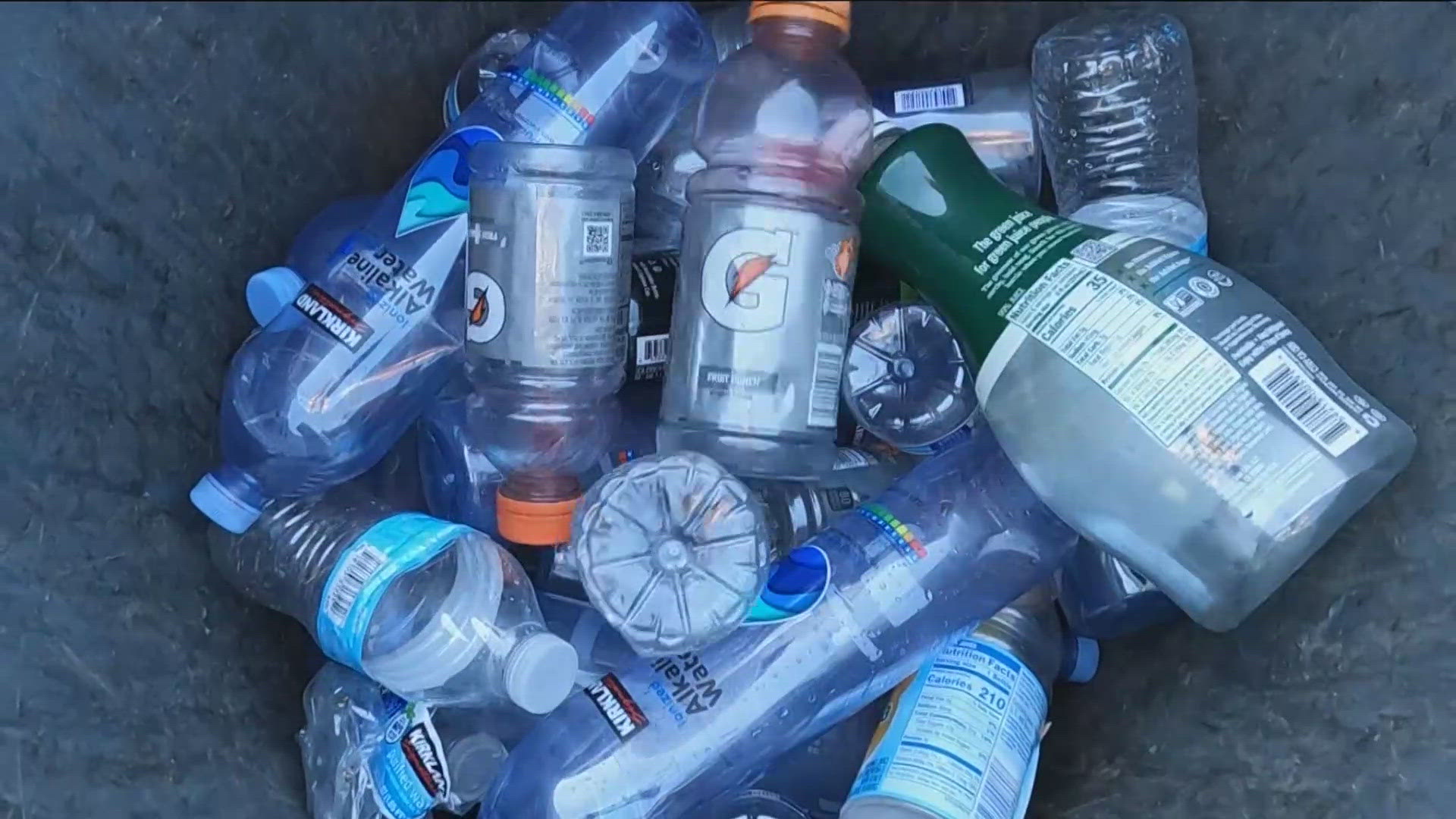SAN DIEGO — About two weeks ago, I sent an email to all CBS 8 employees and put out bins and signs encouraging everyone to bring their recyclables to work. The bins were labeled "aluminum," "glass," and "plastic."
As our employees walked in and out of work, they were reminded that their cans and bottles had a proper place and that I would happily take them to where they belonged.
I also enlisted some young recruits, taking this opportunity to teach my one and 5-year-old children about the importance of recycling by having them help with sorting and crushing cans.
On a recent Wednesday morning, we went to the Miramar Recycling Center, run by Allan Company, at the Miramar Landfill. It wasn’t crowded, so the staff had time to teach this newbie.
They explained that I needed to load the materials into separate bins.
"You separate the cans, the bottles, the glass,” said Roland Harpin, a Recycling Specialist 2 with the City of San Diego's Waste Reduction Division.
It only took a few minutes with a little assistance. I was surprised to hear things like chili cans and protein shake containers would not be bought back, but all those water bottles and soda cans would.
It was time to find out how much we accumulated.
A staff member weighed the bins and subtracted the actual weight of the bin itself to get a total for each type of material.
Out came a receipt showing a total of $7.73.
I took it to the office nearby and got the cash.
Not bad for an easy and clean process.
I also learned what to do and not do for next time.
For example, you may have plastic Greek yogurt and tomato packages at home. Because they don't have a California Redemption Value (CRV) marking, you won't get money for them. That doesn’t mean they're not recyclable, so be sure you put those into your blue bin at home.
Also, this year, Governor Gavin Newsom signed a law requiring the buyback of wine and liquor bottles, including boxed wine with pouches.
“Taking those extra steps ... it’s a little bit of a hassle, but in the end everybody benefits,” Harpin said. "The benefit is you get that CRV fee back. The state created the CRV fee to incentivize people to recycle.
“It is better this way because the material that’s brought in here is cleaner, and it’s already separated. The companies that are buying the materials like it better and cleaner.”
It provides much more reassurance during a time when some people may have lost trust that their goods will, in fact, be recycled.

